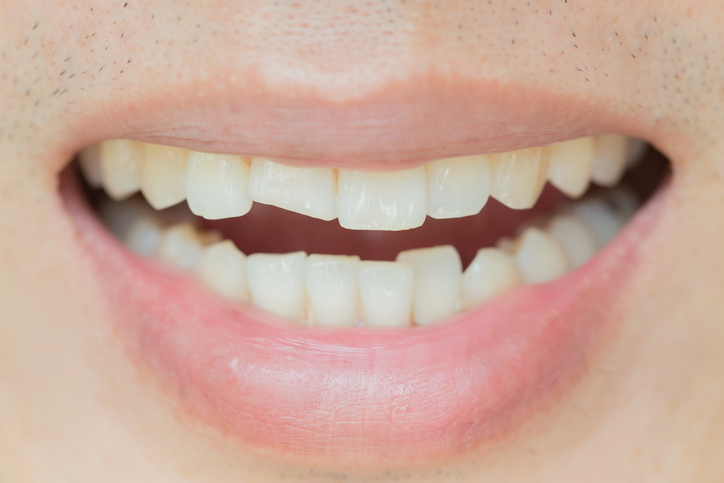
A cracked tooth is never good, but it can be incredibly upsetting when it’s a front tooth for all the world to see.
Oh, no! Suppose you cracked a front tooth! While a broken tooth is bad (and painful!) anywhere in your mouth, a crack in a front tooth can feel incredibly upsetting. After all, everyone can see the chipped tooth when you speak and smile.
But you don’t have to live with a broken tooth for too long. Once you notice the cracked tooth, make an appointment with your dentist. Several treatment options can restore your tooth and give you back your smile. Let’s go over why a tooth cracks and how it can be treated.
What can cause a tooth to crack?
A tooth may fracture due to trauma, such as an accident, fall, or sporting injury. Our teeth become more prone to breakage as we age, especially those with large fillings. Teeth grinding can also cause teeth to weaken and break. Even biting down on hard foods, like a carrot or hard candy, may splinter a tooth.
If a tooth breaks, a piece of it may fall away, but sometimes the fissure (such as a hairline crack) is so thin that it’s not visible, and the break doesn’t cause any pain.
However, you may still feel pain when chewing, sensitivity to hot and cold, and swelling around the cracked tooth. Your dentist can examine your teeth to verify any crack lines with an X-ray or other tests and suggest the appropriate treatment.
How do you fix a cracked tooth?
A break can occur on the biting surface, or cusp, of the tooth. If, for example, a tooth has a large filling, its cusp may break off. Vertical cracks can extend just under the gum line, into the gum line, and near the tooth’s root.
Quick treatment will prevent the crack from worsening and requiring more extensive therapies. If you can’t see your dentist immediately, try to reduce the pain and swelling with ice packs and non-steroid anti-inflammatory medications. Keep your mouth clean by rinsing it with salt water. Depending upon the severity of the crack, your dentist will recommend one of several treatment options:
Bonding. A composite resin matching your tooth color is applied to the tooth to seal the crack. While bonding is less costly than other methods, it’s not as strong. But it’s a good solution for front teeth since they aren’t used much to bite into food.
Veneer. If most of the tooth remains intact, a veneer made of porcelain or plastic can give the tooth a natural appearance.
Crowns. A significant breakage in the cusp or biting surface of the tooth may require a crown made of porcelain. A crown restores the tooth’s shape and protects the inner core of the tooth. Crowns are more expensive than bonding, but they’re also more durable.
Root canal. If the crack extends beyond the enamel and dentin layers into the tooth’s pulp, a root canal may be your best option to preserve the tooth. After completion of the root canal, a crown is placed over the tooth.
Extraction and implant. Unfortunately, if the crack in your front tooth continues below the gum line, your tooth may have to be extracted. But don’t worry! An implant can fill the gap and give you a complete smile once again.
Preventing tooth decay is essential, but so is preventing cracked teeth. Daily brushing and flossing will keep your teeth strong. If you participate in contact sports, wear a mouthguard. Chewing on hard foods can put too much pressure on a front tooth and cause it to crack. Take care when biting down to keep your tooth in one piece.
We’re here to restore your smile
Schedule an appointment at Espire’s Norman, Oklahoma, location today! Our highly trained dentists can check your teeth for cracks and repair the damage with one of several treatment options. Don’t live near our Norman, OK, office? Find one of our other locations near you.
Norman, OK
550 24th Ave. S.W.
Norman, OK 73069
